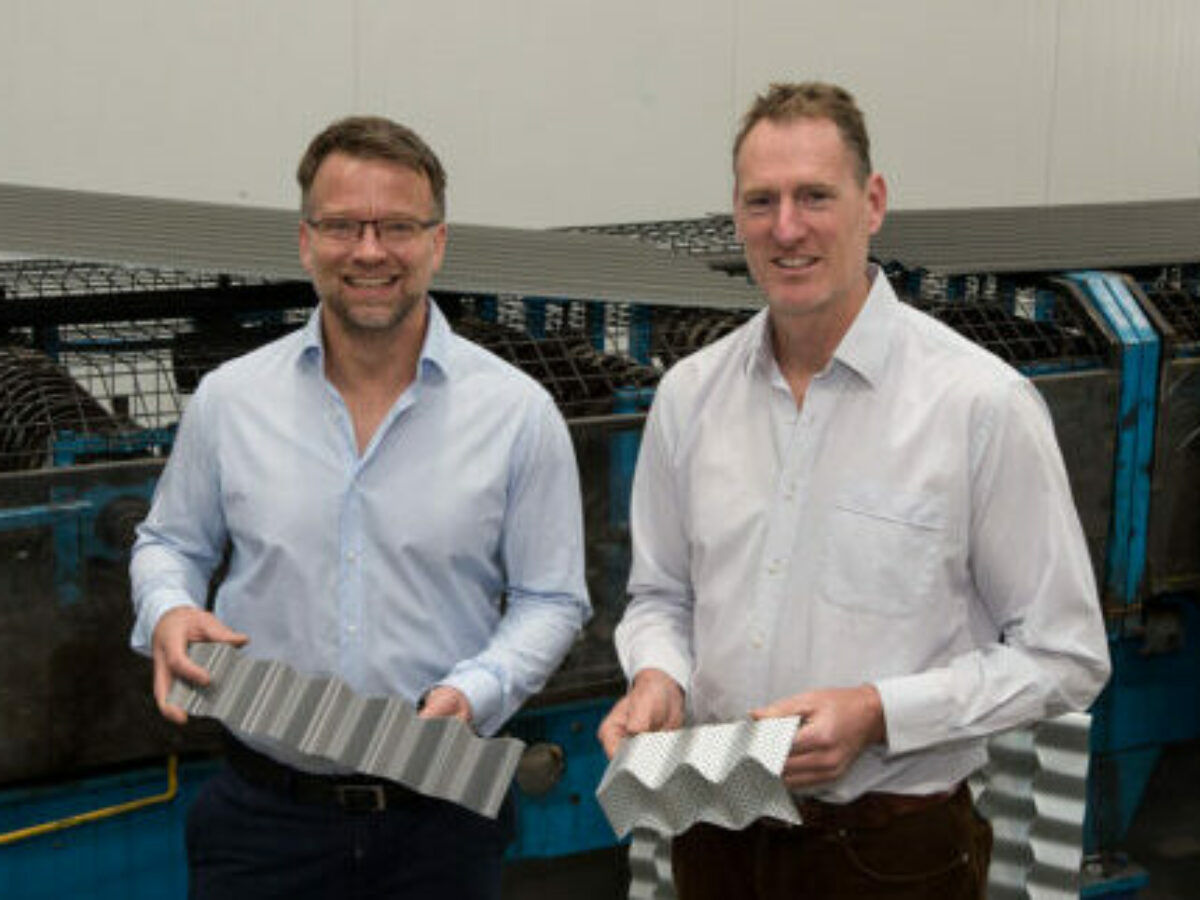Moving from idea to innovation with R&D

A recently-completed 12-month R&D project provides an example of how applied research between industry and academia can proceed successfully. By the Innovative Manufacturing CRC.
Deakin University and Geelong-based manufacturing start-up FormFlow have forged a symbiotic business relationship, arguably not seen enough between research institutions and industry in Australia.
It began in 2016 when Dr Matt Dingle, FormFlow’s now Managing Director, and Dr Matthias Weiss, Senior Research Fellow at Deakin University, joined forces to develop a novel metal bending concept initially proposed by their long-term mentor and friend, Professor Emeritus John Duncan.
After partnering with Ross and Lyn George of Austeng, a prototype bending machine was created and the four went on to formally establish FlowFlow and commercialise the concept, known as the C90 Bend.
In the years that have followed, FormFlow’s founders have built its business model around innovative research and development (R&D).
“Our focus is on innovating, refining and scaling smart building solutions that benefit society. And our relationship with Deakin plays an integral role in bringing this vision to life,” Dingle said.
FormFlow’s commitment to innovation is deeply ingrained within the company’s culture. Not only does FormFlow operate using a system of governance that prioritises organisational effectiveness, equality and consent in decision making, but Weiss is also FormFlow’s R&D director. He splits his time equally between the company and Deakin.
Under Dingle and Weiss’s guidance, FormFlow has undertaken a number of R&D collaborations with their university partner to deliver transformative products, systems, and solutions to the building industry.
Most recently, FormFlow and Deakin concluded a $548,000, 12-month research collaboration with the Innovative Manufacturing Cooperative Research Centre (IMCRC), which explored the use of Industry 4.0 technology to optimise and upscale FormFlow’s steel bending capability.
For Weiss, wearing two hats throughout the project meant he knew firsthand the challenges FormFlow faced, with a vested interest in making sure research delivered commercial solutions.
“Because I’m embedded in both FormFlow and Deakin, I was able to ensure we undertook applied research, which was further supported by IMCRC’s focus on outcomes,” he said.
This approach paid off, and the collaboration resulted in two new research commercialisations.
The first is a 2D laser system that monitors the cross-sectional shape of sheets before and after bending and enables the operator to conduct real-time quality control.
The second is an Industry 4.0 manufacturing cell capable of producing a corrugated corner bend from a flat sheet of steel. The technology, known as the in-phase continuous corner (IPCC), will contribute to the growth and development of FormFlow’s modular housing offering.
“While it’s likely FormFlow would have eventually pursued the R&D on its own, IMCRC’s funding gave us the flexibility to undertake it in a timeframe that aligned with the company’s growth objectives,” said Weiss.
“With FormFlow’s smart technologies come the potential to automate an entirely manual process and minimise waste, delivering significant efficiencies to our customers.”
FormFlow’s collaboration with Deakin and IMCRC has resulted in permanent employment for one of Deakin’s final year students, who joined the business as a research engineer, as well as creating a research pathway for one of Deakin’s PhD students on another R&D project.
Reflecting on the success of their research collaborations, Dingle emphasised the importance of taking time to build relationships at the university or research institution to establish a more integrated team.
“There’s lots of talk about researchers needing to become more aware of industry trends. But I believe it needs to go the other way too. Industry must strive to forge relationships with researchers, especially at the senior levels, to create a feedback loop and shift the cultural balance in favour of innovation,” he said.
“It’s also important that participants seek to obliterate the cultural divide and develop mutual respect for each other’s endeavours. By doing so, they will achieve the clarity and cohesion needed to transform knowledge into successful R&D.”
Picture: supplied
Subscribe to our free @AuManufacturing newsletter here.
@aumanufacturing Sections
Analysis and Commentary Awards Defence Manufacturing News Podcast Technology Videos






